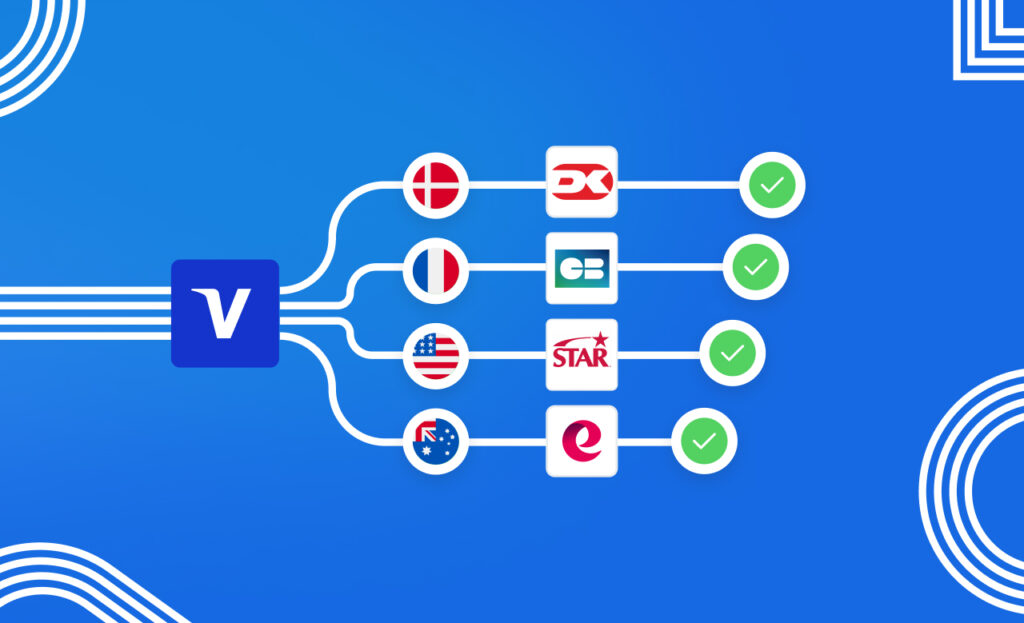
April 23, 2024
Are you ready for co-badged card regulations?
Visa and Mastercard are two of the largest payment networks in the global card ecosystem. According to recent data, they collectively hold a significant share of the global card transaction volume, highlighting their importance in the payments industry. According to the Federal Reserve, they account for nearly 576 million cards.
Their networks are widely accepted by merchants and financial institutions worldwide, contributing to their dominant position in the market, allowing cardholders to use their cards internationally and enjoy a seamless traveling experience.
What are co-badged card payments?
However, some regions have robust local card schemes as competitors, which will increase your local sales. These schemes often carry the Visa and Mastercard logos, hence the term “co-badged cards.” Co-badged cards integrate two or more payment brands on a single card, enabling transactions through multiple networks. An example of a co-badged card might be one issued by a bank that includes a local payment scheme and a global network brand.
Here are a few examples from around the world: In France, 95% of the cards have Cartes Bancaires co-badged. In Denmark, almost 80% of people use Dankort, and in Australia, 90% of EFTPOS cards are co-badged with either Visa or Mastercard.
Co-badged card regulations: A global overview
Legislators worldwide are establishing regulations to ensure fair competition in this field. Here are key developments in several regions:
- Europe: Since 2015, the European Parliament has issued regulations outlining how merchants should accept customer payments using co-badged cards, and they are being reinforced now. These regulations establish standardized technical and commercial requirements for card-based payment transactions carried out within the Union. Many European cards are co-badged with local schemes such as Cartes Bancaires.
Our orchestration platform offers a co-badge solution that can benefit your business if you operate in or are planning to enter the Union.
- United States: Lawmakers are drafting laws to boost competition and choice in the credit card network market, supported mainly by a wide range of small businesses and consumer groups. What are they looking for? The Federal Reserve should ensure that the largest credit card-issuing banks offer a choice of at least two networks.
The US is heading in the direction of the European Union, which means that card issuers will soon be required to offer at least two unaffiliated networks for processing all debit card transactions, including online and card-not-present transactions.
- Australia: Due to the rise of contactless payments, debit card usage has increased in Australia for in-person transactions. These transactions can be processed through three debit card networks: EFTPOS, Debit Mastercard, or Visa Debit. When customers use a dual-network debit card, transactions are automatically routed to the card’s default network unless the merchant opts for less-cost routing (LCR), which is now available for online transactions. The Reserve Bank’s Payments System Board supports issuing dual-network cards and providing LCR functionality to merchants.
How can Gr4vy benefit your business with co-badged payments?
With global regulations shifting towards the adoption of co-badged payments, Gr4vy is commited to help your business adapt to these changes, getting full ownership over their routing configurations in their payment stack without adding any complexity.
Our no-code platform allows you choose to route transactions based on dual brands to optimize costs via local debit rails, retry and cascade using all different instruments, and cardtypes across different payment services at the click of a button.
Gr4vy enables you to comply with new regulations,effortlessly freeing you to focus on optimizing your payment strategies.